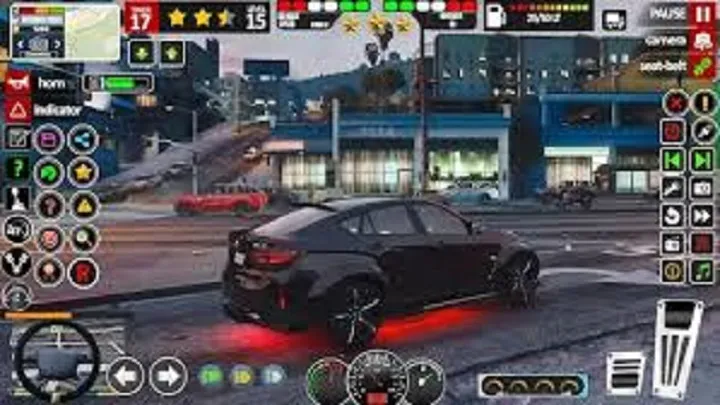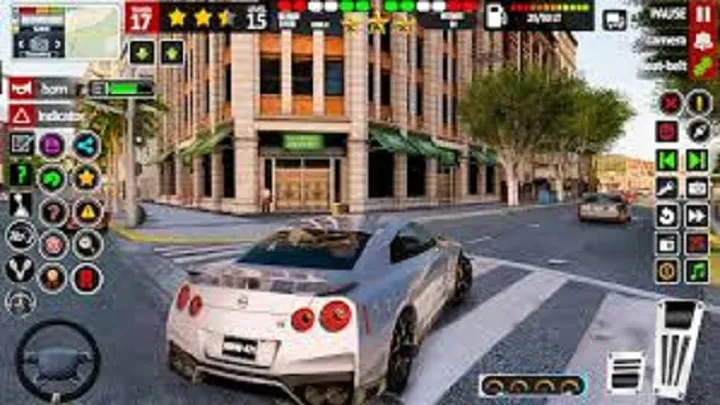Introduction
Car Driving 2025: School Game has quickly gained popularity among mobile and simulator fans for its fresh take on how players learn and experience driving. Unlike other racing or open-world driving titles, this game emphasizes the educational aspect, turning every drive into a test of patience, skill, and decision-making. What sets it apart is its commitment to realistic driving physics—something that has become both the greatest strength and the most controversial challenge for its players. In this article, we will explore in depth the impact of the game’s driving physics, how it shapes progression, and why it divides players between admiration and frustration.
First Steps – The Tutorial and Initial Struggles
When players first launch Car Driving 2025: School Game, they are greeted with a structured tutorial designed to replicate the experience of a driving school. The very first missions emphasize basic controls: accelerating smoothly, braking on time, and keeping within lanes.

Many new players struggle here because the game’s physics system punishes sloppy inputs. Unlike arcade-style driving games, flooring the gas leads to wheel spin, braking too hard causes skids, and turning sharply destabilizes the car. These mechanics surprise casual gamers who expect forgiving controls, making the tutorial an early filter between those who embrace realism and those who quit in frustration.
Learning to Respect Speed Limits
After the tutorial, missions introduce speed limits and traffic regulations. Unlike most driving games where speed is king, Car Driving 2025 punishes reckless acceleration with penalties, mission failures, or reduced rewards.
H3: Why Speed Limits Matter
The goal here is not just to slow players down but to teach situational awareness. Driving through a school zone at 60 mph is an automatic failure, forcing players to adjust their instincts. This attention to real-world driving laws reflects the educational intent of the game.
For players accustomed to fast-paced action, this requirement feels restrictive. However, those willing to adapt find that obeying speed rules makes the experience more immersive, simulating real driving pressures.
The Struggle with Parking Missions
Parking is where Car Driving 2025 shines in both realism and difficulty. Unlike simple “drive into the box” objectives in older driving sims, this game replicates narrow spaces, angled parking spots, and parallel parking challenges.
H4: Common Parking Frustrations
- Oversteering and hitting the curb.
- Misjudging vehicle length during parallel parking.
- Penalties for grazing nearby vehicles.
These missions are some of the most criticized, yet they reflect real-world frustrations faced by driving students. Success requires mastering vehicle physics, spatial awareness, and patience.
Weather Conditions – The Great Equalizer
Midway through the campaign, Car Driving 2025 introduces weather systems that significantly alter physics. Rain, fog, and snow make roads slippery, visibility low, and braking distances longer.
This feature emphasizes adaptability. A player who breezed through dry-weather missions suddenly faces skids, spins, and crashes in slippery conditions. The realism is both thrilling and maddening, pushing players to learn proper braking distances and gentle steering.
Traffic AI and Realistic Hazards
The game does not isolate the player from a living environment. Traffic AI cars, pedestrians, and cyclists complicate every mission. Players must anticipate sudden lane changes, jaywalkers, or even aggressive drivers that test reaction times.
H3: The Role of AI in Driving Education
The AI hazards mimic the unpredictability of real-world roads. For some players, this unpredictability feels unfair, but it reinforces defensive driving skills. The challenge is less about memorizing routes and more about reading the road.
The Exam System – Fear of Failure
One of the most unique aspects of Car Driving 2025 is its exam structure. After completing lessons, players face comprehensive tests that evaluate everything: lane discipline, parking, speed management, and hazard avoidance.
H4: Exam Tension Points
- Strict time limits.
- No tolerance for even minor crashes.
- Failing requires redoing lessons.
The exam system adds real stakes, making players nervous in the same way real learners feel during actual driving tests. Some find this stressful, but others appreciate how it mirrors real-world anxiety and accomplishment.
Multiplayer Challenges – Comparing Skills
Later in progression, players can compete with others in multiplayer exams or timed missions. The multiplayer mode is not about racing but about precision. The game ranks players based on accuracy, speed compliance, and parking execution.
This system adds social pressure. Players not only fear failing against AI but also embarrassment in front of real opponents. It reinforces the game’s focus: Car Driving 2025 is not about thrill-seeking but about skill mastery.
The Balance Between Realism and Fun
Here lies the heart of the debate. While the realistic physics make Car Driving 2025 educational and unique, they also make it frustrating for casual players who expect a fun, lighthearted game.
Pros of Realism
- Teaches genuine driving skills.
- High replay value due to difficulty.
- Adds immersion and tension.
Cons of Realism
- Steep learning curve.
- Frustration from repeated failures.
- Not appealing to arcade driving fans.
The game walks a tightrope, and whether players enjoy it depends on their expectations.
Emotional Growth – From Frustration to Mastery
Perhaps the most rewarding part of Car Driving 2025 is the emotional journey it creates. Players often start frustrated by the physics but, through practice, develop confidence. The game simulates the real process of learning to drive: initial mistakes, gradual improvement, and eventual mastery.

This emotional progression transforms the game into more than just a simulator—it becomes a metaphor for patience, discipline, and growth.
Conclusion
Car Driving 2025: School Game is not just another driving simulator. Its commitment to realistic physics creates a unique learning experience that mirrors real-world driving struggles. From battling parking spots to surviving slippery roads and stressful exams, players encounter frustrations that eventually lead to mastery and satisfaction. While its realism may alienate casual players, those who persist discover one of the most rewarding and authentic driving simulations on the market.

















